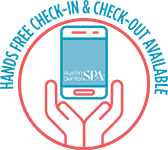Laser Dentistry
DR. MARK SWEENEY: We have three different lasers in our office. One is used in our hygiene department to diagnose whether there’s decay in the tooth or not by penetrating the tooth with a laser beam and measuring how much tooth bounces back. Totally harmless. Very simple to do. If there’s decay into a tooth inside of a tooth to a degree that it needs to be restored, much of the light gets absorbed and so the digital reading on that laser goes up and its much more effective than x-rays at being able to diagnose whether there is decay in a tooth that needs to be removed. That laser is called a diagnodent.
Our second laser is a soft tissue laser called a diode laser. It only will work on soft tissue, but it allows us to reshape gum tissue. We can use it on or on fever blisters that virtually makes them disappear within two to three days and kills the virus that causes the fever blisters. We use it all the time to move tissue around. Front tooth cases when the gum tissue is uneven between the front teeth.
Then we have our waterlase MD which is the most state of the art laser on the market right now and made by a company called Biolase. This piece of technology is almost as awesome as my CEREC machine. The waterlase allows us to remove not only soft tissue so that we can do all the things we could do with the diode laser, but the big advantage to the waterlase is it allows us to remove hard tooth structure as well. So we can do fillings with this laser, most times without the use of anesthetic.
I don’t understand exactly how that all works, but I know that we use it everyday especially on children, but even on adults to remove decay in a tooth that previously would have required anesthetic in order to use the conventional dental drill and we’re able to use the laser. It’s faster. It’s painless and the bond between the filling material and the tooth is actually enhanced by the lasered tooth. So it’s just been an awesome piece of equipment to add to our repertoire.
